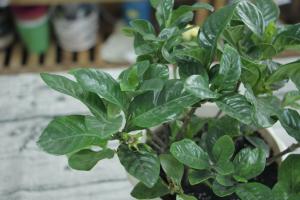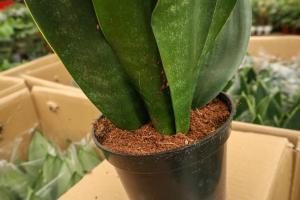Introduction
Growing tomato plants can be a very gratifying and rewarding experience. However, it requires time, effort, and the proper conditions to ensure that the plant flourishes and delivers the desired crops. Recognizing the signs of a healthy tomato plant is a crucial step in maximizing your yield. In this article, we will be discussing everything you need to know to help you identify a thriving tomato plant.
Signs of a healthy tomato plant
1. Strong and sturdy stem: The stem is the support system of the tomato plant. A healthy plant will have a thick and sturdy stem that can stand up straight, even when weighed down by fruits, foliage, or strong winds.
2. Vibrant green leaves: Leaves are the photosynthetic factories of the plant. A healthy plant will have bright green leaves and a uniform color throughout the entire plant. Yellow spots or leaves that are turning brown are signs of a diseased plant.
3. Well-developed roots: Roots are the lifeline of the plant, responsible for absorbing nutrients and water from the soil. A plant with a healthy root system will have a well-developed, fibrous root system that spreads out throughout the soil.
4. Fruit set: The most rewarding sign of a healthy tomato plant is when it begins to produce fruit. The first fruits should appear within 45 to 90 days after transplanting, depending on the variety. The size and quality of the fruit depend on the variety, growing conditions, and the plant's health.
How to maintain a healthy tomato plant
1. Proper watering: Tomatoes need consistent watering, and the soil should be kept moist but not waterlogged. Overwatering can lead to root rot, while under-watering can cause the plant to wilt and dry out.
2. Fertilization: Tomato plants require adequate nutrition to produce healthy plants and fruits. Fertilizers should have nitrogen, phosphorus, and potassium, and should be applied every two weeks to keep the plant fed.
3. Pruning: Pruning helps to remove unwanted leaves and branches that deprive the plant of needed nutrients. Remove suckers, which are branches that grow from the stem between the main trunk and the branches.
4. Pest management: Common tomato plant pests such as aphids, caterpillars, and whiteflies can cause considerable damage to the plant. Using organic sprays or natural predators can help control pest populations and prevent damage to the plant.
Conclusion
Identifying a healthy tomato plant requires keen observation and attention to detail. By monitoring the stem, leaves, roots, and fruits, you can easily recognize a thriving plant. Consistent watering, fertilization, pruning, and pest management are essential for keeping your plant healthy throughout the growing season. Growing healthy tomato plants begins with a healthy soil environment and the right growing conditions. With the right care, you can look forward to bountiful yields of delicious, home-grown tomatoes.

 how many times do yo...
how many times do yo... how many planted tre...
how many planted tre... how many pine trees ...
how many pine trees ... how many pecan trees...
how many pecan trees... how many plants comp...
how many plants comp... how many plants can ...
how many plants can ... how many plants and ...
how many plants and ... how many pepper plan...
how many pepper plan...































